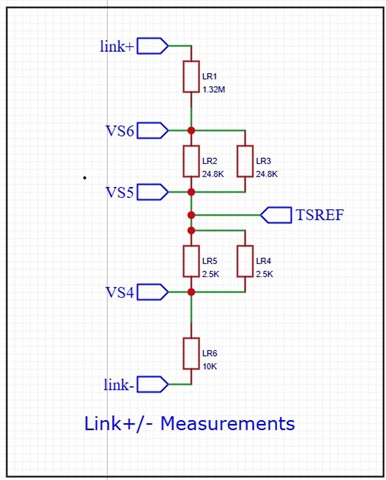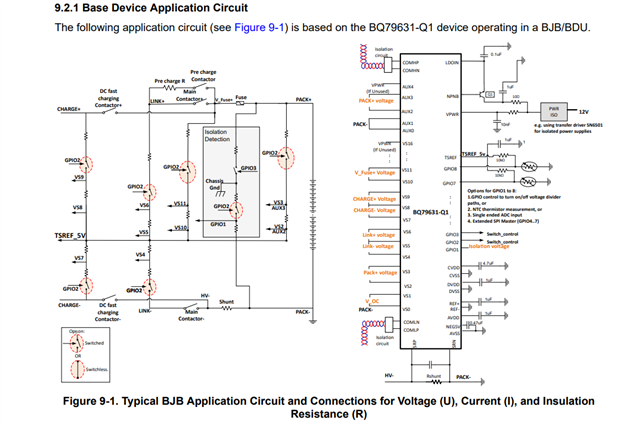Tool/software:
Hi ,
I’ve designed a board using the BQ79631 with the schematic exactly as shown in the datasheet. The device powers up fine, and I’m able to read correct values for HV+ (Battery +) and Fuse+. Below are my measured differential readings (in volts):
VS1 = 0.012 V (Dev 1 Cell 1) → Floating
Battery+:
-
VS2 = 4.978 V (Dev 1 Cell 2) → VS2 / TSREF
-
VS3 = 2.416 V (Dev 1 Cell 3) → VS3 (HV +)
Link+/Link–:
-
VS4 = –4.115 V (Dev 1 Cell 4)
-
VS5 = 1.693 V (Dev 1 Cell 5) → VS5 / TSREF
-
VS6 = –0.017 V (Dev 1 Cell 6)
Charge+/Charge–:
-
VS7 = –1.684 V (Dev 1 Cell 7)
-
VS8 = 1.699 V (Dev 1 Cell 8) → VS8 / TSREF
-
VS9 = –0.013 V (Dev 1 Cell 9)
Fuse+:
-
VS10 = 0.012 V (Dev 1 Cell 10) → VS10 / TSREF
-
VS11 = 2.440 V (Dev 1 Cell 11) → VS11 (Fuse +)
Unused:
-
VS12 = 4.556 V
-
VS13 = –0.000 V
-
VS14 = –0.001 V
-
VS15 = –0.001 V
-
VS16 = –0.001 V
According to the datasheet, for a correct differential measurement:
-
VSn – VSn-1should be between –1 V and 5 V -
Also, VSn > VSn-1
However, with the datasheet-recommended resistor ladder configuration, I can’t see how this is possible — especially since VS2 is referenced to TSREF (as are VS5, VS8, and VS10). This makes it impossible to maintain VS10 > VS8 > VS5 > VS2 in practice.
Because I’m seeing negative readings on some channels (particularly for Charge+/Charge– and Link+/Link–), I’m concerned that:
-
The IC could be damaged over time.
-
It may never be able to measure these points correctly.
I’ve attached my resistor ladder schematic for reference. Any suggestions or clarifications would be appreciated.
Thanks in advance!






